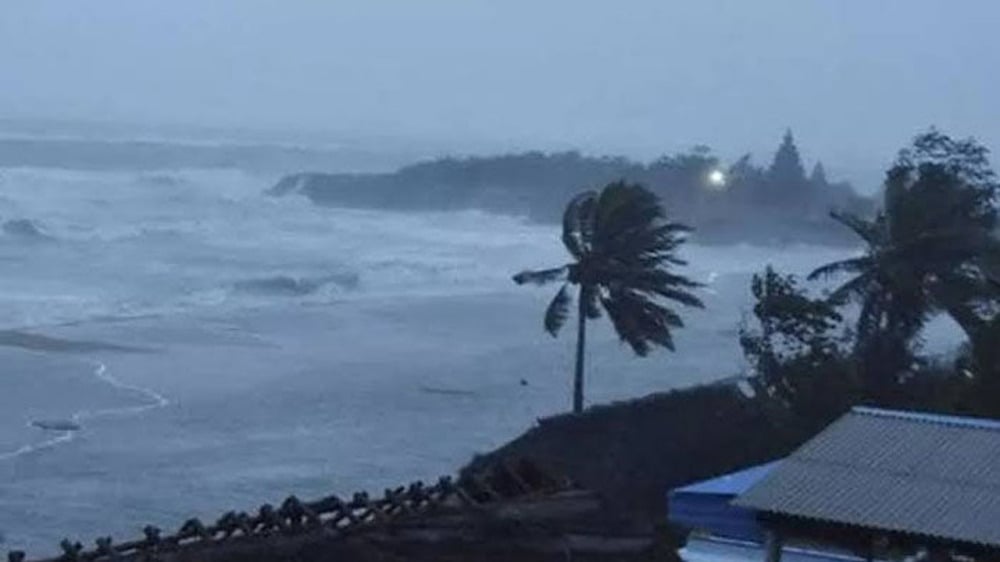
In the last few years, citizens have had to face immense hardships due to lack of serious thought and action on the issue of disaster management in India. Man's helplessness in the face of nature's wrath was evident but this helplessness seemed to be compounded in the absence of concrete planning and farsightedness. Since natural disasters always hang like a sword over the country, there was a need for an approach that could truly ground disaster management. Within just 13 days of the devastating Kutch earthquake in 2001, the Gujarat State Disaster Management Authority (GSDMA) was established to take disaster management towards the goal of zero casualties.
Solid planning before disaster, Gujarat model implemented in the country
Prime Minister Narendra Modi changed the process of disaster management. Just as he has adopted a policy of 'zero tolerance' against terrorism and security, his approach to disaster management is also one of 'zero casualty'. Along with post-disaster relief, he laid special emphasis on preparing for future disasters and ensuring that those preparations reach the people on the edge. In the year 2003, under the leadership of the then Chief Minister Shri Narendra Modi, coordination between all departments of the government was strengthened through the GSDMA Act and special powers were given to the Disaster Management Authority. Now this model of Gujarat has been implemented across the country. The effective implementation of this model led to the success of achieving zero casualties during Cyclone Biparjoy in June 2023. A detailed communication plan, contact, field support, arrangement of shelter homes for evacuation and post-disaster operations were planned under the leadership of Chief Minister Bhupendra Patel.
2 crore 64 lakh messages were sent in 17 days
An important factor in avoiding loss of life and property in a disaster is to provide timely and accurate information to people about natural disasters. Disaster experiences have made the government realize that if timely information reaches people living in affected areas, it becomes easier to evacuate them. During Cyclone Biparjoy, weather department updates were sent to mobile holders of all networks through the State Emergency Operations Center (SEOC) in Gujarat with the help of a special software. During the Biparjoy period from June 1 to June 17, 2023, 2 crore 64 lakh messages were sent to users of all mobile operators in the affected areas of Banaskantha, Kutch, Mehsana, Sabarkantha, Patan, Dwarka, Jamnagar, Morbi and Junagadh. At this time, the government also broadcast these messages on TV in the form of scroll messages as an innovative initiative. These messages were broadcast in both English and Gujarati languages and the transition became easier as people got timely information. Accurate tracking and real-time data by the India Meteorological Department (IMD) made it easier for the government to dispatch the entire machinery to the affected areas.
Construction of 76 multipurpose cyclone shelters
Another essential part of preparation against cyclones is to evacuate citizens from the affected areas to safer places. To protect the people of the state, the state government has farsightedly constructed 76 state-of-the-art Multipurpose Cyclone Shelters (MPCS) in the coastal areas. These shelters helped in maintaining zero casualties in the state during the cyclone. These 76 multipurpose cyclone shelters have been constructed at a cost of ₹271 crore in 10 districts of the state, which includes 25 in Junagadh, 29 in Gir Somnath, 4 in Porbandar, 4 in Devbhoomi Dwarka, 4 in Kutch, 2 in Amreli, 1 in Jamnagar, 1 in Navsari, 5 in Bharuch and 1 in Ahmedabad. Apart from this, the government had identified 2213 safe shelters in various talukas under the disaster management plan. Fresh food was made available to the citizens with the help of community kitchens at the shelters. Keeping in mind the health of the people, the medical team also kept visiting these shelter homes regularly and conducting health checkups. Due to the efforts of the state government, a total of more than 1 lakh 56 thousand people including 1174 pregnant women, 7526 elderly people, 30631 children were evacuated from 10 districts shortly before the cyclone.
Special arrangements are also made for animals and wildlife
The sensitivity of the government is also evident from the fact that the SOP was also ready for the rescue of Gir lions at the time of floods. Apart from Gir, special rescue teams were deployed in Narayan Sarovar Sanctuary of Kutch, Matana Madh and Barda of Porbandar. 184 teams were formed with 58 control rooms in nine divisions to rescue the Asiatic lions. A team was constantly tracking the lions with the help of high-tech systems. Since the habitat of the lions is in seven rivers, special teams are ready to rescue the lions during floods. More than 52 thousand cattle were transported to safe places from Kutch, Dwarka, Jamnagar and Morbi districts.
Capacity building through public participation
Prime Minister Narendra Modi has laid great emphasis on public participation in disaster management to make it effective. Today, villages of the state are also being trained and equipped under the Disaster Management Scheme. In the year 2016, the 'Aapada Mitra' scheme was announced by the NDMA. The aim of this scheme is to provide necessary training to volunteers in every district affected by disaster. Under this scheme, the target is to train 1 lakh community volunteers in the states and union territories of India, out of which 5500 Aapada Mitras have been prepared in 17 districts of Gujarat. In collaboration with SDRF, they have been given the necessary training to help during disasters. They have been trained in life-saving skills, coordination and assistance required for disaster response and emergency response kits. At the time of Biprajyogi, 383 Aapada Mitras served with the SDRF team in 8 districts of Gujarat. This is an initiative towards making people more safe against disasters by increasing the scope of public participation. This is also preparing an experienced leadership at the local level, which will be helpful in disaster management in future.
 look news india
look news india
